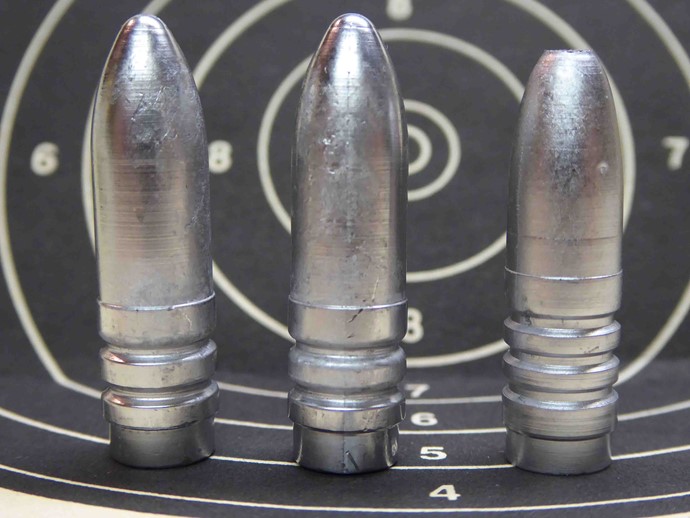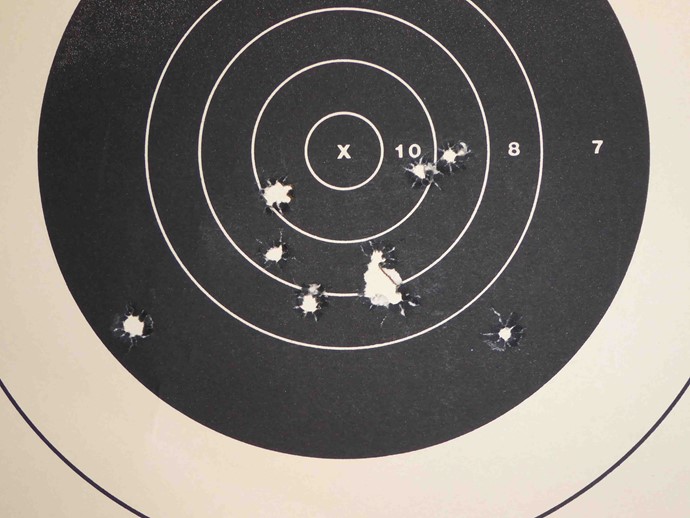Larry Gibson
posted this
14 March 2021
I've been casting with bottom pour pots 311/314/316-299s in 1, 2, 3, 4 and 6 cavity moulds for many years. I learned early on that with such long skinny bullets it is necessary to have a good alloy, have the alloy temp right, fill the cavities correctly and have a good casting tempo so as not to over heat the mould.
The rounded bands and inclusions in the bullets pictured illustrate the alloy is not best for that bullet. What is wanted is a good ternary alloy with 2.5 to 5.0% of both antimony and tin in it. That balances out the antimony and tim and makes an excellent alloy, especially for the bullets you are casting. WWs with lino just exacerbates the problem as the amount of antimony exceeds that of the tin and the excess antimony will not stay in solution with the lead. I suggest trying the WWs with solder and add a bit more tin for better fill out if needed.
The alloy casting temp should be 700 - 725 degrees. The alloy should be well fluxed and that heat range maintained through out casting.
When filling the cavity, regardless of order, the alloy must be into the cavity as quick as possible and should remain molten until the sprue is formed on top of the plate. The sprue plate should not be more than 1/2" below the spout. The flow should be as fast as possible w/o splattering the alloy. each cavity should be filled individually. The molten alloy should roil back up out of the hole and form a generous sprue. Do not be afraid to let it run off the plate. A large sufficient sprue is necessary so the molten alloy will properly fill out. Many do not believe how quickly the alloy cools and solidifies in the hot mould. That's what is producing the inclusions and lack of fill out along with the poor alloy.
With a proper ternary alloy, a correct alloy temp and proper casting your bullets should drop well filled out and be nice, smooth and shiny. Adjust your casting tempo so the bullets do not "frost". I fill the cavities, let the mould sit off to the side of the pot until the sprue hardens and turns mottled grey, cut the sprue off, open the sprue plate, tap the handle nut with the mallet as I open the blocks letting the bullets fall on a towel. I then close the blocks assuring proper alignment and closure, close the sprue plate, put the cut sprue into the pot (a heavy leather glove is worn in the right hand) and then repeat. Casting faster just increases the amount of rejects.
The old axiom applies when casting; "slow is smooth, smooth is fast"...... doing so I end up with a larger quantity of quality cast bullets than if I try to really "cast fast".
LMG
Concealment is not cover.........

















